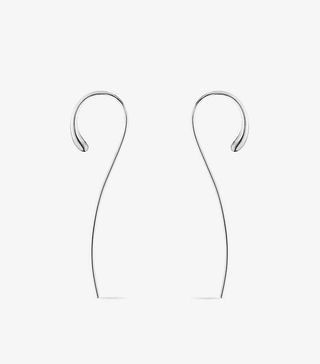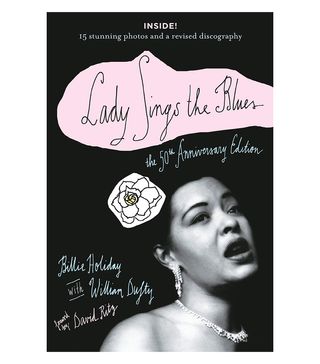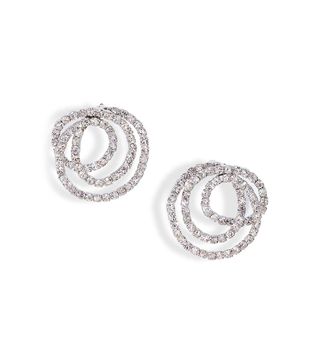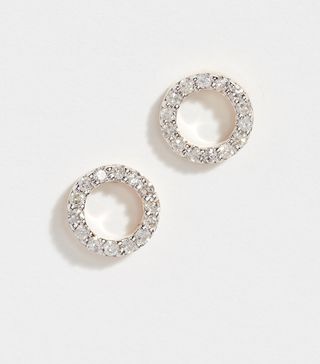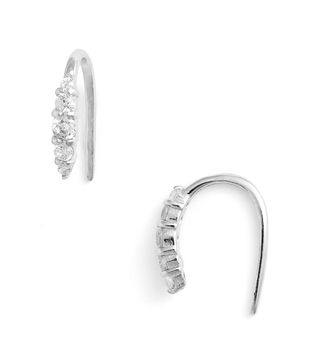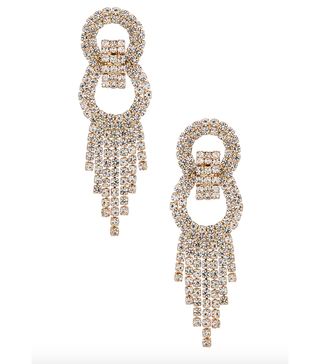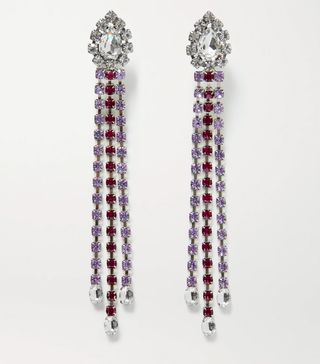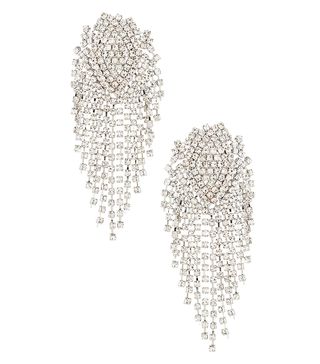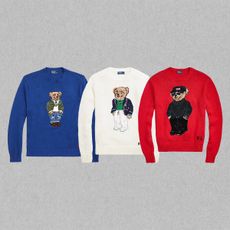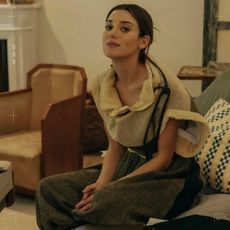Billie Holiday Fans and Fashion Devotees Will Want to Stream Hulu's Newest Film
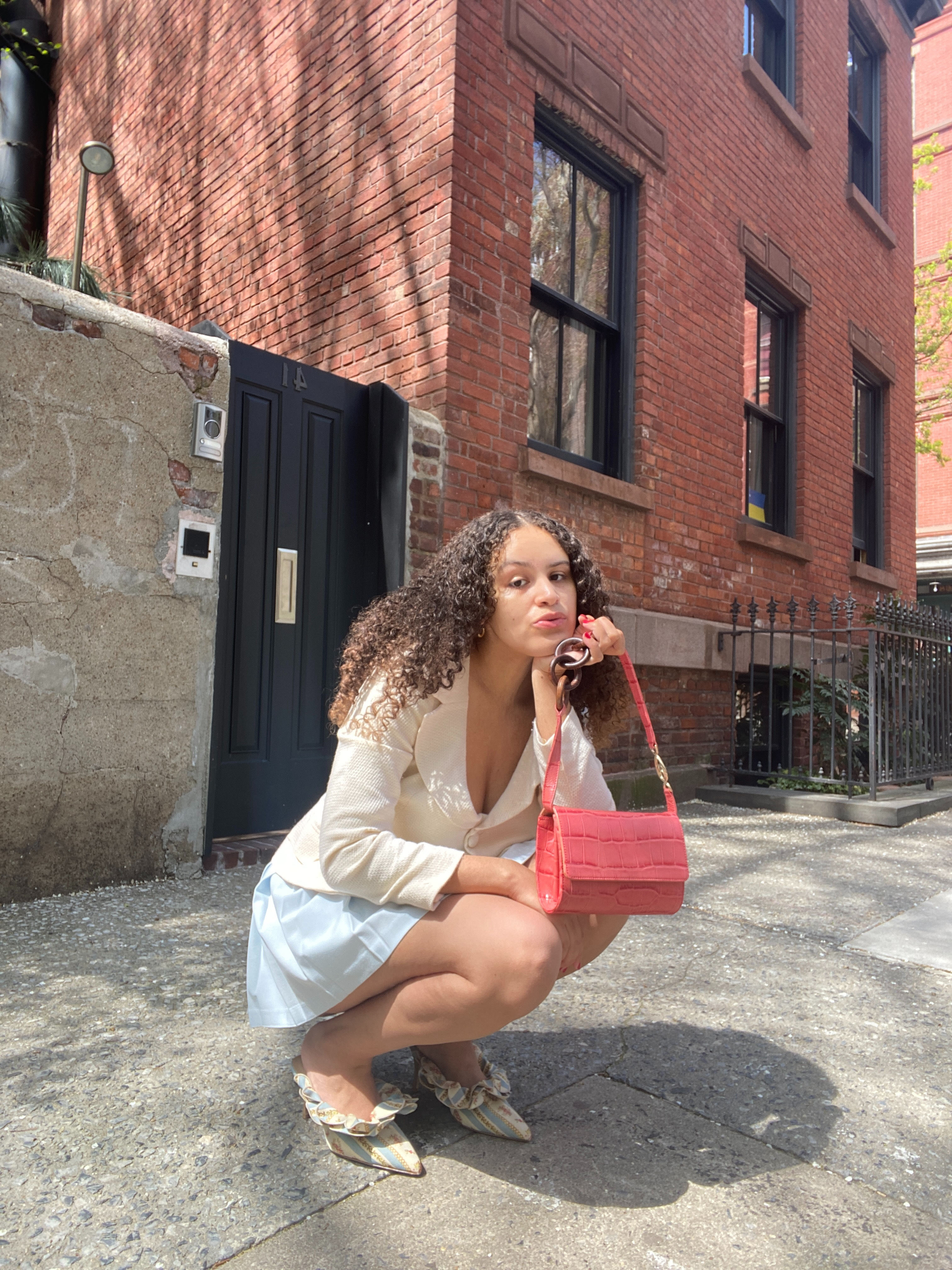
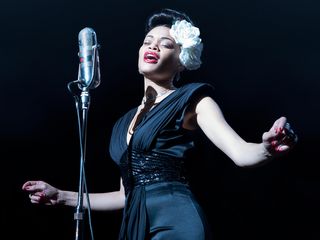
Any one of my friends can tell you that if I’m not recommending what designers to support right now or the best things to buy, I’m discussing the latest shows and films to watch. Sure, like everyone, I’m a sucker for stylish characters or even semi-terrible television, but I don’t play around when it comes to recommending exquisite art because it can be therapeutic. With that in mind, allow me to recommend the latest on my list of must-sees: Hulu’s most recent debut, Billie Holiday vs. The United States.
Directed by Lee Daniels, the film brings to life the tragic demise of one of jazz’s biggest stars due to drug abuse, violent relationships, and a career-blighting sting-operation by the F.B.I. While this certainly isn’t the first time a film has depicted the government’s policing of Black artists and political movements, it is Holiday’s fight to bring civil inequities to light through her popular music that makes this film so powerful. It was the musician's bone-chilling song about lynchings, Strange Fruit (1954) that propelled her into stardom. Notably, the release of that melody began the government's censorship. Of course, that didn’t stop her from performing it across the south. And it’s that fiery spirit that seeped into every aspect of her life, her art, and, of course, her iconic style.
If I haven’t sold you yet on why you need to watch this film, ahead you’ll hear from the film’s costume designer, Paolo Nieddu, about what it was like creating a Billie Holiday–inspired wardrobe for Andra Day, and how the process felt like a therapy session.
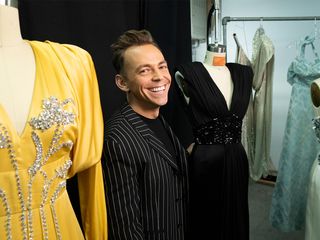
For those who aren’t familiar with your work, can you tell our readers a little about yourself?
I have been a costume designer and working in film and television since 2007—over fifteen years, even though it feels like it’s been two. I worked with Lee Daniels on Empire and with Patricia Field for the Sex and the City movies, plus with Anna Tolben, the fashion director at Interview Magazine for a time.
What has been your favorite project to work on thus far, and why?
Wow, I guess I’d have to say, Billie Holiday vs. The United States. It’s one of the most recent projects I’ve worked on, but it was challenging, and that is what made it fun and exciting. It was the first time I’ve ever worked on a period piece, so I loved that. I have a personal love for vintage and the era the film takes place in, which made the project particularly exciting.
Why Billie Holiday vs. The United States? What about this project interested you?
I was definitely interested in the time period. It was set in the late ‘40s, and we were doing the mid-50s as well, which was a huge draw. The glamour of Billie Holiday was alluring for me. I didn’t know alot about Billie Holiday in terms of her personal life before the project, but her essence drew me in.
What was it like working with Lee Daniels to bring this film to life?
Lee Daniels is a maverick. He brings together all of his departments, and he gets into the weeds with everything. (I mean that in the best way.) It’s such a hands-on, creative process when working with him—it’s an artist to artist experience. He pushes all of us to tell a story, whether it was our production design, with the acting, with the music that was chosen, and the wardrobe that was created. Daniels just has this way of creating layered storytelling. This film isn’t only this glamorous bio—it explores many facets of humanity.
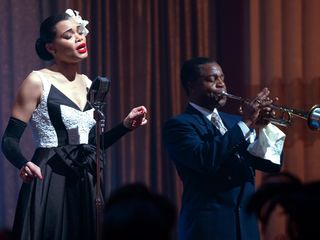
How is designing costumes for a period piece different from contemporary works?
When it comes to creating costumes for a period piece, the process is much more meticulous versus when you’re creating costumes for a contemporary film. When it’s not a period film, you can go to a department store and fill the dressing room with a rack of clothing that only needs to be altered. But with period films, the costumes require research, and if you want to find certain pieces you have to source them from vintage stores or specialty shops. Once you find them, the clothing and accessories can be fragile if they’re vintage. And if you’re building costumes from scratch, it requires so much more time.

How long did you prepare and research costumes for this film? How long did it take for these costumes to come to life?
We had eight weeks of prep for the movie, and we filmed it for three months. The process of sourcing costumes for the film began two months before filming, and I collaborated with Prada for some of the first looks we filmed. As we started filming, we’d source and finalize costumes with our tailors and seamstresses based on what we’d be shooting next. The looks were all over the place in terms of time, because of the filming schedule, and whether or not they were custom made.

Can you tell us a little bit about the process of creating costumes for Andra Day as Billie Holiday? Did you collaborate with fellow team members? How did that process look for you?
The costumes were a culmination of various teams, inspiration, and sources. I worked early prep with Andra Day in Los Angeles to create a vision for Holiday’s style and then had a fantastic team to help me bring it to life. The team was based in Los Angeles and Montreal, and they were a massive support in creating a lot of the original costumes (like Billie Holiday’s Carnegie Hall gown). In addition to having an entire team re-create pieces, I was pulling and buying vintage pieces online.
Some elements of the costumes were pen to paper, and then some were authentic vintage or vintage-inspired remakes. Often, I’d find a vintage piece I loved that was unusable because it was stained or falling apart, so we’d remake it for the film. For example, when Billie Holiday wears a suit in the movie, she’s leaving the train station. I found that suit and we custom-made the hat to match it that was inspired by a picture I found of Billie Holiday. Every costume in the film had its own story—it was like a piece-to-piece, look-to-look type of thing.

Did you draw a lot of the costume inspiration from historical documentation, or did you take more creative agency with Holiday’s looks?
It was a combination of both, where we would match parts of her documented life in the film; we had images to go off of. And then, in the other moments, we didn’t have documentation for, we were able to imagine, and we got to take liberties. A lot of Billie Holiday’s photos are in black and white, so we got to dream up the colors and patterns we wanted. And for that, I worked directly with our production designer and the director in those moments to define what we wanted Holiday to be in that moment.
What’s stunning about the costumes in this film is that they do an incredible job of not only transporting you back to the time but have this sense of old Hollywood glamour—for you, what encapsulates the fashion of that time period the best?
That’s a good question; I feel like the gowns helped. Holiday’s show presence was so glamorous. But I think all the details—like her jewelry, live orchids, and her accessories—gave that overall glamorous look.

Speaking of the jewelry, tell us about how you went about sourcing pieces for the film. Where they vintage? Or new, vintage-inspired pieces?
A lot of the jewelry was vintage. I always have an idea of the jewelry in my head. Then on the day of filming, once the actor is in hair and makeup and the costume, I’ll pull together a tray of jewelry and have them try them on, and see how it looks—kind of like how a real woman at that time would be dressing at her vanity. And the jewelry for this film mostly vintage; I found it on 1st Dibs, eBay, Esty. There was only one pair of earrings in the film, which weren’t vintage, and it was in the scene where she sings God Bless a Child. We drew inspiration from Billy Holiday’s image in 1958 wearing these Georg Jensen earrings for that scene. They still make them; they’re slightly different, but the brand loaned us a pair, which was the most contemporary jewelry she wore.
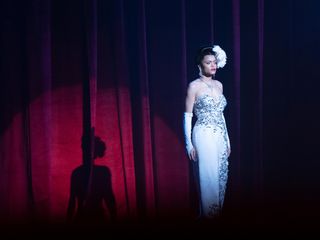
In addition to the jewelry, Billie Holiday wears opera gloves in the film. Can you tell us about those?
Yes. When you think of Billie Holiday, it was iconic to see her wearing gloves while performing. Of course, they were used as a disguise for her needle marks, but they were her signature accessory aside from the flowers in her hair. For the film, and at that time the film was set in, there wasn’t stretch or elastic fabric, and I didn’t want to have shiny, weird opera gloves that looked new, so we custom-made them to fit Andra’s form. She had black and white silk jersey versions, along with lace ones.
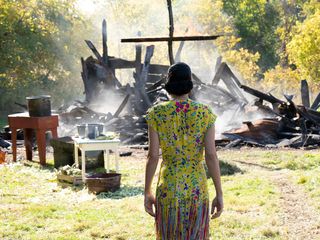
When creating a concept for Billie Holiday’s looks, what did you want them to say? What role did you feel they played in the development of her storyline?
I always wanted to capture her as a star, a glamorous person who made it, and who’s showing her wealth in certain scenes or pretending she’s okay in certain situations. Clothes are armor, and she demonstrates that with a lot of her looks. I also wanted to make sure that I honored that when things happen to you in real life, you don’t know what’s coming your way at that moment, so I didn’t want her approach to style to change based on the storyline. When a scene was particularly sad or dramatic, I didn’t want to dress her down in anticipation of something that would be bad. I always wanted to be beautiful, even if the moment wasn’t.

Billie Holiday lived life on her terms. How did you create costumes that honored who she was?
Researching helped me to figure out who Billie Holiday was as an individual. I read her biography, Lady Sings the Blues, and listened to a ton of her music. Even from my image research of her, I was able to see how modern she was in terms of her fashion choices. I’d look at an image and think, "This is so edgy.” From discovering that she continued to perform Strange Fruit to fight for what she believed in, to learning that she was bisexual, and seeing how risk-taking she was with fashion, I was able to see that she was the type of woman that didn’t care what other people thought; she was modern and open, and unapologetic. I always kept that in mind with her costumes, and that translated into how I went about picking colors, or necklines, or accessorized her in the film.

There are so many great costumes in this film. Did you have a favorite?
Yes, Mrs. Freedy, who Miss Lawerence played, was one of the most challenging characters to create costumes for in the film and was a personal favorite. Billie Holiday mentions him in her book, and research shows he existed, but there are no photos of this man. We know he was a part of her glam squad; she mentions that he dressed her and had caught him putting on her furs and her dresses in her autobiography. So Freddy was tricky. I wanted to do it right and give him his style and set him apart but not make him a caricature. I didn’t want him to feel like it was overly costumey, so I had to think to myself, "What would this guy wear?” This is obviously someone that can be the most authentic self in public at that period, so it was a fine line on how to dress him.
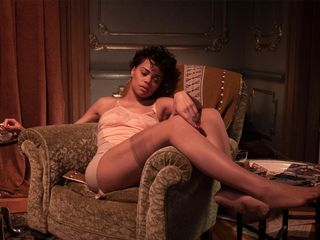
Was there anything you learned through this project about Billie Holiday that you might not have known before?
I didn’t realize that until reading her book, listening to her music, and working on this particular story, the extent to which Holiday went through. She had to fight to be where she was, and even when she got there, she still had to fight. It transcended so much more than her music and her image. I was blown away by her story. She was constantly being used as a commodity. Whether it’s through funding someone’s lifestyle while she's the one working and performing or getting set up by various partners in her life. That was upsetting to learn.
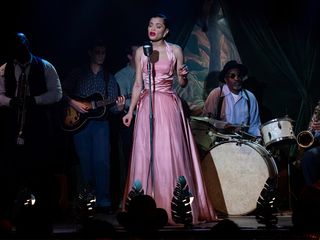
Why is this film and this aspect of Holiday’s story important to share right now?
While creating this film I continuously thought about how insane it is that this is all still happening. We’ve been on—and are still on—this long road for civil rights in this country. there still aren’t any anti-lynching laws, and we’re still dealing with all the same issues.
Furthermore, this story is important because people don’t realize how much of an advocate Holiday was, how hard her life was, and how stylish she was for the time. Artists express themselves through various mediums, including their clothes, whether it’s a political statement, or about their sexuality, or their point of view in any way. I feel like Holiday’s avant-garde approach to fashion, art, and life was something that I could hopefully convey on screen.
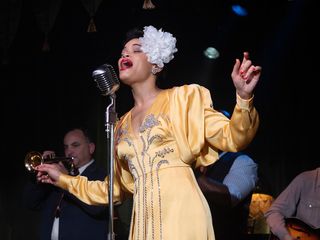
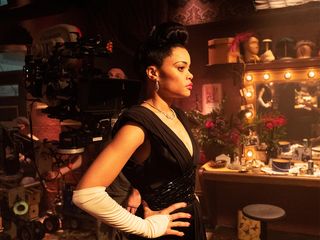
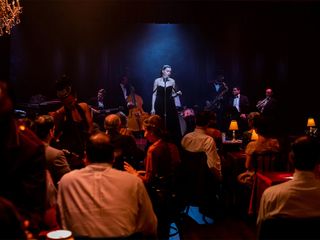

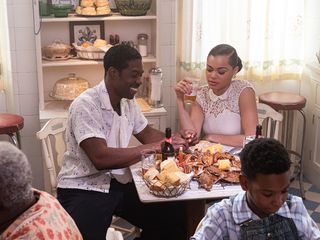
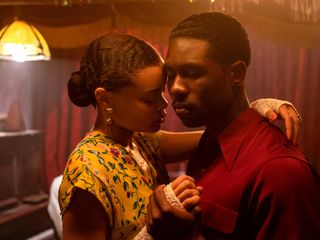

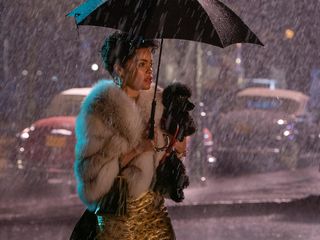
Next: The Politics of Fashion in Judas and the Black Messiah

Jasmine Fox-Suliaman is a fashion editor living in New York City. What began as a hobby (blogging on Tumblr) transformed into a career dedicated to storytelling through various forms of digital media. She started her career at the print publication 303 Magazine, where she wrote stories, helped produce photo shoots, and planned Denver Fashion Week. After moving to Los Angeles, she worked as MyDomaine's social media editor until she was promoted to work across all of Clique's publications (MyDomaine, Byrdie, and Who What Wear) as the community manager. Over the past few years, Jasmine has worked on Who What Wear's editorial team, using her extensive background to champion rising BIPOC designers, weigh in on viral trends, and profile stars such as Janet Mock and Victoria Monét. She is especially interested in exploring how art, fashion, and pop culture intersect online and IRL.
-
 From Prada to Balmain, Here's What the Next WNBA Stars Wore on Draft Night
From Prada to Balmain, Here's What the Next WNBA Stars Wore on Draft NightI can't wait for the tunnel 'fits.
By Eliza Huber
-
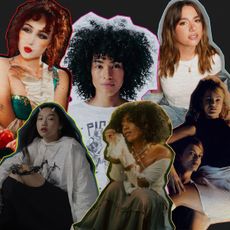 Our 2024 "Ones to Watch in Music" List Is Here!
Our 2024 "Ones to Watch in Music" List Is Here!Time to refresh your playlists.
By Jessica Baker
-
 Zendaya's Going to Set Off Tomdaya Fans With This Red Carpet Wedding Dress
Zendaya's Going to Set Off Tomdaya Fans With This Red Carpet Wedding DressLaw Roach never misses.
By Eliza Huber
-
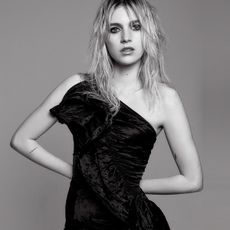 Nell Tiger Free Is This Generation's Scream Queen
Nell Tiger Free Is This Generation's Scream QueenFrom Servant to The First Omen, the actor has found her sweet spot in the horror genre.
By Jessica Baker
-
 Dua Lipa Wore Prada's New Elegant It Bag With a Pants-less Outfit in London
Dua Lipa Wore Prada's New Elegant It Bag With a Pants-less Outfit in LondonIt's about contrast.
By Allyson Payer
-
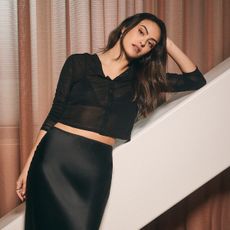 Camila Mendes Is Getting Back to Her Roots
Camila Mendes Is Getting Back to Her RootsStarting with her new film, Música.
By Jessica Baker
-
 Zendaya Wore a Plunging V-Neck Gown With a Thigh-High Slit on the Red Carpet
Zendaya Wore a Plunging V-Neck Gown With a Thigh-High Slit on the Red CarpetPerfect.
By Eliza Huber
-
 The Transformation of Sydney Sweeney
The Transformation of Sydney SweeneyYou've never seen the 26-year-old quite like this.
By Eliza Huber
